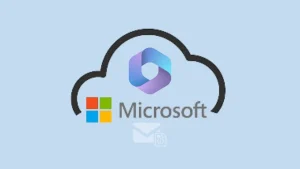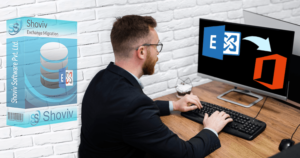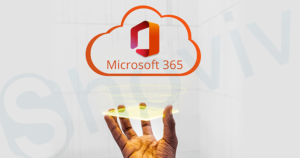Microsoft Exchange Online is a cloud-based messaging platform that allows users to access their email messages, contacts, and calendars. It offers a range of features to users, such as shared mailboxes, etc. However, users who are looking to manage Exchange Online likely need to connect to Exchange Online PowerShell for it. The most secure way for users to connect to PowerShell Exchange online is through multiple-factor authentication (MFA).
Multiple-factor Authentication provides an extra layer of security to users’ data. It is especially required when organizations are accessing their crucial data. Users will learn everything about connecting to Exchange online securely in this guide.
Also, we will explore the stepwise procedure to connecting Microsoft Exchange Online using PowerShell. It will help users manage their data effectively if they are dealing with multiple users or extensive-size data. Moreover, users can easily automate the process, simplify configuration settings, and get users’ information quickly. So, let’s start understanding how to connect to Exchange Online PowerShell with MFA.
Prerequisites for connecting to Exchange Online PowerShell
Users need to make sure to complete all the requirements before learning the steps to connect Exchange Online PowerShell. So, be sure to follow the points below and then move forward to connecting Exchange Online.
- Make sure that the latest PowerShell version is installed on your device.
- Also, install the Microsoft Exchange Online Management Module before connecting to Exchange Online PowerShell.
- Ensure you have the required permission from admin or you have admin credentials to proceed further.
When you complete these requirements in your system, follow the instructions below to use PowerShell to connect to Exchange Online.
How can users connect to Exchange Online PowerShell with MFA?
To connect to Exchange Online PowerShell, users can follow the below steps.
- If you still have not installed the Exchange Online Management Module, open the PowerShell and run the following command.
Install-Module -Name ExchangeOnlineManagement- Once installed, you need to import the Module to the PowerShell session by running the command as follows:
Import-Module ExchangeOnlineManagement- Now, implement the Connect-ExchangeOnline script to connect to Exchange Online PowerShell.
Connect-ExchangeOnline -UserPrincipalName your-email@example.com -ShowProgress $trueAfter running this command, the users will be redirected to the verification page, where they need to enter the password and complete verification using MFA.
- After that, you will be able to run Exchange Online PowerShell commands once you have completed the above steps successfully.
- Lastly, if you want to disconnect from the Exchange Online PowerShell, run the following script.
Disconnect-ExchangeOnline -Confirm:$falseThese are the important steps that users need to consider when they are looking to connect to Exchange Online PowerShell. We recommend that users try this solution carefully after ensuring that they have completed all the prerequisites to connect to PowerShell Exchange Online.
If your purpose is to back up or restore the Exchange Online mailbox data, you must try third-party automation. However, it might take too much time for the users to find the best solution to cover this task. Therefore, we have come up with a robust solution offered by Shoviv Software to export or import Exchange Online data.
Why do users should choose the Shoviv Exchange Backup and Restore Tool?
Users can face a lot of unforeseen situations when working with Exchange Online. Therefore, it would be better to have a professional solution, like the Shoviv Exchange Online Backup Tool, to prevent data from being disrupted in the future. This software backs up Exchange data into numerous file formats, like PST, MSG, EML, MBOX, MHT, etc. Along with this, users can restore data from OST, PST, EML, and other file formats to Exchange Online. Users can process multiple mailboxes without any size restrictions using this tool.
It allows users to use date and message class-wise filters to include or exclude items from the Exchange mailbox. Moreover, the GUI of this software is simple, and every user can perform backup and restore tasks in a hassle-free way. It also comes with a scheduler option, which is capable of scheduling the backup or restore job on a regular basis. Users can even schedule the backup or restore process on a specified day and time.
Ending Words
We hope users completely learn how to connect to Exchange Online PowerShell with MFA after understanding the above instructions. Moreover, we also share an automated solution (Shoviv Exchange Backup and Restore Tool) to keep a backup of Exchange Online’s crucial data. Moreover, this software offers numerous features to make the process simpler and quicker for the users. It also comes with a free evaluation version, allowing users to process the first 50 items from each folder of the Exchange mailbox. So, try its free evaluation version to check its capabilities and compatibilities before having its full version in your system.
Popular Guide:
- What is the eDiscovery PST Export Tool? – Best Alternatives
- What is the Exchange Deployment Assistant Tool & How to Use it?
- How to Increase/Disable EWS Throttling in Exchange Online?
- How to Increase Outlook Attachment Size Limit on Office 365?
- Guide to Stop the Exchange Server from Recreating Meetings?
- How to Import or Export Contacts in Any Outlook Version? - March 31, 2025
- Understand Groups & Permissions on a SharePoint Site - March 21, 2025
- My Outlook Emails are Stuck in the Outbox! What’s Going On? - March 12, 2025


